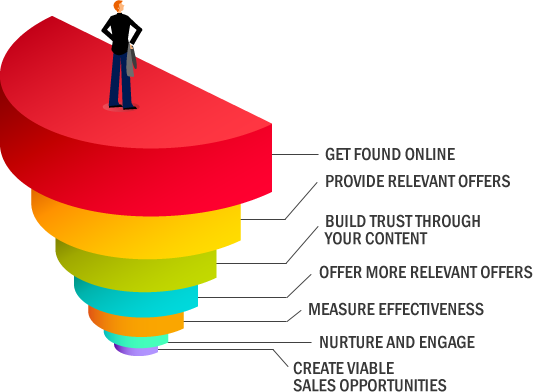How To increase ROI in Digital Marketing
Increasing return on investment (ROI) in digital marketing requires a strategic approach and continuous optimization. Here are some key steps to help you How To increase ROI in digital marketing:
- Set Clear Goals and KPIs: Clearly define your goals and key performance indicators (KPIs) before launching any digital marketing campaign. Whether your objective is to increase website traffic, generate leads, or drive conversions, having well-defined goals and metrics will allow you to measure and optimize your ROI effectively.
- Identify and Target the Right Audience: Understanding your target audience is crucial for maximizing ROI. Conduct thorough market research and develop buyer personas to identify your ideal customers. Use data and analytics tools to gather insights about their demographics, interests, online behavior, and purchasing patterns. With this information, you can create tailored marketing messages and target your campaigns to reach the right audience.
- Optimize Landing Pages and Conversion Funnel: Ensure that your website’s landing pages and conversion funnel are optimized for conversion. Implement clear and compelling calls-to-action (CTAs), improve page load times, and streamline the user experience to reduce bounce rates and increase conversion rates. A seamless and intuitive user journey can significantly impact ROI.
- Implement Conversion Tracking and Analytics: Use conversion tracking and analytics tools to measure the effectiveness of your digital marketing campaigns. Set up conversion tracking codes or pixels to track key actions such as form submissions, purchases, or newsletter sign-ups. Analyze the data to identify which marketing channels, campaigns, or keywords are driving the highest ROI, and allocate your resources accordingly.
- Utilize Data for Optimization: Leverage data-driven insights to continuously optimize your digital marketing efforts. Analyze campaign performance data to identify areas of improvement and make data-backed decisions. Test different variations of your ads, landing pages, and CTAs to identify what works best. Make adjustments based on the insights gained to maximize ROI.
- Invest in Remarketing and Email Marketing: Implement remarketing campaigns to target users who have previously engaged with your website or shown interest in your products or services. Remarketing allows you to re-engage with potential customers and increase the likelihood of conversion. Additionally, leverage email marketing campaigns to nurture leads, build customer loyalty, and drive repeat purchases. Personalize your email content based on customer behavior and preferences for better engagement and ROI.
- Optimize for Search Engines: Improve your website’s visibility in search engine results through search engine optimization (SEO) techniques. Conduct keyword research, optimize on-page elements, create high-quality content, and build authoritative backlinks. Higher organic search rankings can drive more targeted traffic and reduce reliance on paid advertising, ultimately improving ROI.
- Test and Optimize Paid Advertising: If you’re running paid advertising campaigns, continuously test and optimize your ads to improve ROI. Experiment with different ad formats, targeting options, ad copies, and bidding strategies. Monitor campaign performance closely, adjust your budgets, and allocate resources to the channels and campaigns that generate the best ROI.
- Leverage Social Media Advertising: Social media platforms offer robust targeting options and advanced analytics for optimizing ad campaigns. Use social media advertising to reach your target audience effectively, increase brand awareness, and drive conversions. Test different ad formats, creative elements, and audience segments to identify the best-performing campaigns and achieve a higher ROI.
- Monitor and Adjust Campaigns Regularly: Regularly monitor and evaluate the performance of your digital marketing campaigns. Analyze metrics such as click-through rates, conversion rates, cost per acquisition, and return on ad spend. Make data-driven decisions to adjust your strategies, reallocate budgets, and optimize campaigns for better ROI.
Remember, increasing ROI in digital marketing requires a data-driven and iterative approach. Continuously monitor, analyze, and optimize your campaigns based on insights gained from data to maximize your return on investment.




